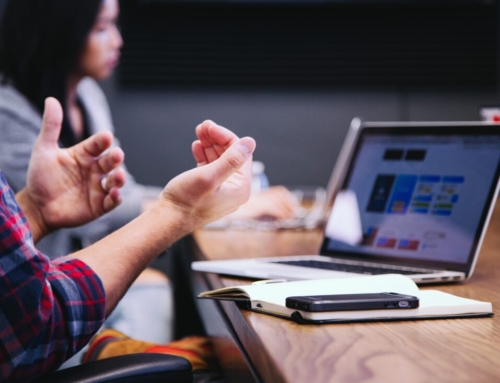What is creativity and why does it matter?
First, some definitions
Creativity is the act of turning new and imaginative ideas into reality. Creativity is characterised by the ability to perceive the world in new ways, to find hidden patterns, to make connections between seemingly unrelated phenomena, and to generate solutions. Creativity involves two processes: thinking, then producing. If you have ideas but don’t act on them, you are imaginative but not creative.
— Linda Naiman
“Creativity is a combinatorial force: it’s our ability to tap into our ‘inner’ pool of resources – knowledge, insight, information, inspiration and all the fragments populating our minds – that we’ve accumulated over the years just by being present and alive and awake to the world and to combine them in extraordinary new ways.”
— Maria Popova, Brainpickings
“Creativity is the process of bringing something new into being. Creativity requires passion and commitment. It brings to our awareness what was previously hidden and points to new life. The experience is one of heightened consciousness: ecstasy.”
— Rollo May, The Courage to Create
Here’s the catch: If your creation is too far ahead of its time it will likely be judged as absurd and be rejected. Someone once said, you want to be 15 minutes ahead of your time, not 20 years.
“A product is creative when it is (a) novel and (b) appropriate. A novel product is original not predictable. The bigger the concept, and the more the product stimulates further work and ideas, the more the product is creative.”
—Sternberg & Lubart, Defying the Crowd
One thing I know for sure is that we are all creative, just in different ways.
We can all enjoy what psychology professor Ruth Richards, calls “everyday creativity.” Everyday creativity has to do with making things that give you pleasure, like cooking or gardening or DIY projects. Richards says, “Engaging in creative behaviors, makes us more dynamic, conscious, non-defensive, observant, collaborative, and brave. Creativity provides opportunities for self-actualization. It makes you more resilient, more vividly in the moment, and, at the same time, more connected to the world.”
What is Innovation?
Innovation is the implementation of a new or significantly improved product, service or process that creates value for business, government or society.
Some people say creativity has nothing to do with innovation— that innovation is a discipline, implying that creativity is not. Well, I disagree. Creativity is also a discipline and a crucial part of the innovation equation. There is no innovation without creativity. The key metric in both creativity and innovation is value creation.
Why does creativity matter?
In today’s world, creativity is becoming increasingly important due to the rapid pace of change and the need for new and innovative solutions to complex problems. Creativity is what makes us human. Creativity is the lifeblood of progress and without creativity we would stagnate.
Creativity gives us a competitive advantage in the age of AI. While AI is undoubtedly a powerful tool, it cannot replicate our human perspective, intuition, and creativity that comes from experience, expertise, and empathy. Nor can it develop the soft skills that are essential for creativity and innovation, such as critical thinking, problem-solving, communication, and adaptability
Creativity is the most crucial factor for future success
IBM’s 2010 Global CEO Study stated:
The effects of rising complexity calls for CEOs and their teams to lead with bold creativity, connect with customers in imaginative ways and design their operations for speed and flexibility to position their organizations for twenty-first century success.
The Creativity Gap
A 2012 Adobe study on creativity shows 8 in 10 people feel that unlocking creativity is critical to economic growth and nearly two-thirds of respondents feel creativity is valuable to society, yet a striking minority – only 1 in 4 people – believe they are living up to their own creative potential.
Can creativity be learned?
The short answer is yes. A study by George Land reveals that we are naturally creative and as we grow up we learn to be uncreative. Creativity is a skill that can be developed and a process that can be managed.
How to be more creative
Creativity begins with a foundation of knowledge, learning a discipline, and mastering a way of thinking. You can learn to be creative by experimenting, exploring, questioning assumptions, using imagination and synthesizing information. Learning to be creative is akin to learning a sport. It requires practice to develop the right muscles and a supportive environment in which to flourish.
Sir Richard Branson has a mantra that runs through the DNA of Virgin companies. The mantra is A-B-C-D. (Always Be Connecting the Dots). Creativity is a practice, and if you practice using these five discovery skills every day, you will develop your skills in creativity and innovation.
“Creativeness is the ability to see relationships where none exist.”
— Thomas Disch, author, 334, (1974)
For example you can make comparisons between your company and others outside of your industry. Questions I ask my clients’ teams in advance of our creativity and innovation ideation sessions are:What companies do you most admire and why? What are they doing that you could adopt or adapt to your own company?
Studies by Clayton M. Christensen and his researchers uncovered The Innovators DNA: Your ability to generate innovative ideas is not merely a function of the mind, but also a function of five key behaviours that optimize your brain for discovery:
- Associating: drawing connections between questions, problems, or ideas from unrelated fields
- Questioning: posing queries that challenge common wisdom
- Observing: scrutinizing the behavior of customers, suppliers, and competitors to identify new ways of doing things
- Networking: meeting people with different ideas and perspectives
- Experimenting: constructing interactive experiences and provoking unorthodox responses to see what insights emerge
We are all creative, just in different ways. The research shows us we can all learn to be creative.
These posts might interest you too:
- Seven Habits of Highly Creative People
- Creativity and Innovation workshops
- A curated list of creativity tools and techniques
- Are You Stuck on a Problem? Start Questioning Your Assumptions
Generative research on creativity
Generative research shows that everyone has creative abilities. The more training you have and the more diverse the training, the greater the potential for creative output. Research has shown that in creativity quantity equals quality. The longer the list of ideas, the higher the quality of the final solution. Quite often, the highest quality ideas appear at the end of the list.
Behavior is generative; like the surface of a fast flowing river, it is inherently and continuously novel… behavior flows and it never stops changing. Novel behavior is generated continuously, but it is labeled creative only when it has some special value to the community… Generativity is the basic process that drives all the behavior we come to label creative.” – Robert Epstein PhD, Psychology Today July/Aug 1996
Overcoming myths about creativity
Beliefs that only special, talented people are creative (and you have to be born that way) diminish our confidence in our creative abilities. The notion that geniuses such as Shakespeare, Picasso, and Mozart were `gifted’ is a myth, according to a study at Exeter University. Researchers examined outstanding performances in the arts, mathematics, and sports, to find out if “the widespread belief that to reach high levels of ability a person must possess an innate potential called talent.”
The study concludes that excellence is determined by:
- opportunities
- encouragement
- training
- motivation, and
- most of all, practice.
“Few showed early signs of promise prior to parental encouragement.” No one reached high levels of achievement in their field without devoting thousands of hours of serious training. Mozart trained for 16 years before he produced an acknowledged masterwork. Moreover many high performers achieve levels of excellence today that match the capabilities of a Mozart, or a Gold Medallist from the turn of the century.” (The Vancouver Sun, Sept.12/98)
Fostering creativity at work: Rules of the garage
Follow these simple rules and you will foster a culture of creativity and innovation: These were defined by HP, which in fact started in a garage.
Believe you can change the world.
Work quickly, keep the tools unlocked, work whenever.
Know when to work alone and when to work together.
Share – tools, ideas. Trust your colleagues.
No politics. No bureaucracy. (These are ridiculous in a garage.)
The customer defines a job well done.
Radical ideas are not bad ideas.
Invent different ways of working.
Make a contribution every day. If it doesn’t contribute, it doesn’t leave the garage.
Believe that together we can do anything.
Invent.
-1999 HP Annual Report
Updated March 25, 2023
See also:





